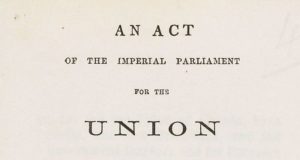In Groia v Law Society of Upper Canada, 2018 SCC 27, decided last week, the Supreme Court of Canada once again fractured over the approach to take to the judicial review of an administrative decision ― and, once again, the majority chose correctness review disguised as reasonableness as its methodology. The substantive issue in Groia was whether the Law Society was entitled to discipline a lawyer for advocacy that took “the form of personal attacks, sarcastic outbursts and allegations of professional impropriety, grinding the trial to a near standstill”. [12] I have no articulate views on this, except a general sense that the fewer powers law societies have, and the more circumscribed these powers are, the better. But I do want to comment on the administrative law aspects of the decision.
* * *
As Justice Moldaver, writing for the majority, describes its decision, the Law Society’s
Appeal Panel grappled with the issue of when in-court incivility amounts to professional misconduct under the Law Society’s codes of conduct in force at the relevant time. It reasoned that incivility “capture[s] a range of unprofessional communications” and ultimately settled on a multifactorial, context-specific approach for assessing a lawyer’s behaviour. [36; references omitted]
The Panel then applied this test to Mr. Groia’s case. The issue for the Supreme Court is twofold: first, it must review the approach devised by the Panel; second, the Panel’s application of this approach. However, although all distinguish the two questions they must answer, the majority, Justice Côté, who concurs, and Justices Karakatsanis, Gascon, and Rowe, who jointly dissent, all consider that the Panel’s decision on both must be reviewed on the same standard. The majority and the dissent opt for reasonableness, though they apply it differently. Justice Côté goes for correctness.
As Justice Moldaver notes, the Supreme Court’s earlier decisions “establish that law society misconduct findings and sanctions are reviewed for reasonableness”. [43] This is because both the elaboration of the applicable analytical framework and its application “involve the interpretation of the Law Society’s home statute” ― or, as in this case, rules enacted under this statute ― “and the exercise of discretion”. [45] While the question of “the permissible scope of [lawyers’] in-court behaviour is arguably of central importance to the legal system as a whole”, [51] it is not “outside the Law Society’s expertise”. [51] Indeed, “Law Society disciplinary panels are composed, in part, of other lawyers”. [52] Justice Moldaver also rejects the claim, advanced by a dissenting judge at the Court of Appeal for Ontario and accepted by Justice Côté, that sanctions for lawyers’ behaviour in the courtroom are different in that imposing them risks trenching on judicial independence. In Justice Moldaver’s view, this is simply not so: “a trial judge is free to control the conduct in his or her courtroom irrespective of the degree of deference accorded to a law society’s disciplinary decision by a different court”. [55]
Having established reasonableness as the standard of review, Justice Moldaver considers the arguments advanced against the framework developed by the Panel in detail. I will not describe his reasons, partly because I have little to say on their substance, and partly because this part of them alone runs for almost 60 paragraphs. What matters for my present purposes is this: on each point and sub-point, after reviewing the Panel’s decision in at most a single paragraph, Justice Moldaver gives extensive explanations of what the Panel’s decision means, and why it is appropriate. Though these explanations are occasionally couched in the language of reasonableness, there is no doubt that Justice Moldaver provides his own views on the approach to judging alleged incivility by lawyers, instead of merely ratifying the Panel’s.
As for the application of the framework to Mr. Groia’s conduct, Justice Moldaver concludes that the Panel’s decision was unreasonable. In Justice Moldaver’s view ― explained over the course of over 30 paragraphs ―, the Panel failed to apply the test it had itself articulated, and to take into account the factors that, on its own stated approach, ought to have mattered. For Justice Moldaver, “there is only one reasonable outcome in this matter: a finding that Mr. Groia did not engage in professional misconduct on account of incivility”. [125] (Now, here’s a question: would it be good if someone could reverse the Supreme Court’s decisions when they don’t follow the Court’s stated approach?)
As already noted, Justice Côté is of the view that the applicable standard of review is correctness, because lawyers’ in-court behaviour must be subject to the ultimate control of the judiciary. She insists that
An inquiry by a law society into a lawyer’s in-court conduct risks intruding on the judge’s function of managing the trial process and his authority to sanction improper behaviour. It does so by casting a shadow over court proceedings — in effect, chilling potential speech and advocacy through the threat of ex post punishment, even where the trial judge offered the lawyer no indication that his or her conduct crossed the line. And it permits an administrative body to second-guess the boundaries of permissible advocacy in a courtroom that is ultimately supervised by an independent and impartial judge. [168]
Justice Côté agrees with Justice Moldaver on the application of the test for misconduct, and thus concurs in the result.
The dissenters, by contrast, agree with Justice Moldaver that the standard of review is reasonableness, and also that the Panel’s approach was reasonable. However, they disagree with the way Justice Moldaver applied this standard, accusing him of
fundamentally misstat[ing] the Appeal Panel’s approach to professional misconduct, and reweigh[ing] the evidence to reach a different result. This is inconsistent with reasonableness review as it substitutes this Court’s judgment for that of the legislature’s chosen decision maker. [177]
The dissent faults Justice Moldaver with being insufficiently deferential to the Panel. “[D]eference”, they write, “recognizes that delegated authorities will have greater expertise in matters under their scope of authority”, [178] and when the applicable standard of review is reasonableness, it “is not optional”. [179] In particular, “deference bars a reviewing court from conducting an exacting criticism of a decision in order to reach the result that the decision was unreasonable”, or from “supplement[ing] the decision maker’s reasoning for the purpose of undermining it”. [180]
The dissenters “consider that Justice Moldaver reformulates” [188] the framework articulated by the Panel. As a result, they disagree with Justice Moldaver’s application of this framework too: “[i]t is not a respectful reading of the … Panel’s reasons to articulate a novel test … then fault the Panel for failing to apply it”. [199] The Panel’s decision is intelligible and defensible, and this is not a case where only one outcome could be reasonable. Indeed, such cases will be anomalies, because
[t]he existence of reasonableness review is, rather, premised on the fact that “certain questions that come before administrative tribunals do not lend themselves to one specific, particular result”. [215, quoting Dunsmuir v New-Brunswick, 2008 SCC 9, [2008] 1 SCR 190 at [47]]
The dissent then describes ― at some length, and with limited reference to the Panel’s decision ― what it expects to be the pernicious consequences of the majority’s decision. The majority, the dissent fears, “sends the wrong message to those who look to this Court for guidance”. [227]
* * *
Therein, it seems to me, lies the rub. People look to the Supreme Court for guidance ― not for mere affirmation that an administrative decision-maker’s reasons were good enough and that in any event there is no right answer to the question they addressed. The whole point of having what the Constitution Act, 1867 foreshadows as a “general court of appeal for Canada” is that such an institution can explain what the law is. If such a court does not say what the law is, but only indicates that an administrative decision is within the bounds of what the law will tolerate ― without explaining where these bounds actually are ― then it is not doing its job.
It is no surprise, then, that Justice Moldaver’s reasons show little sign of deference to the Panel. What lawyers across Canada are interested in is what the Supreme Court itself thinks about their standards of conduct ― not in whether it thinks that the opinion of a single provincial disciplinary body on this subject was “within a range of possible, acceptable outcomes which are defensible in respect of the facts and law”. [Dunsmuir, [47]] Indeed, the dissenters, for all the bitterness with which they chide Justice Moldaver for his failure to defer, and despite their own ostentatious display of deference, cannot help but enter the debate with their own comments about the appropriate standards of civility. If the question the Court is deciding is indeed one of central importance to the legal system, as Justice Moldaver concludes (and the dissent specifically agrees with this part of his reasons), this is entirely comprehensible.
Hence the question that, with apologies to Ronald Dworkin, I ask in this post’s title. Earlier this year, I wondered whether “the Court is growing disenchanted with deference to administrative decision-makers’ decisions on questions of law”, and perhaps even trying to kill off reasonableness review without telling anyone. The cases decided since then only provide more evidence for the proposition that the default standard of review in Canadian administrative law is disguised correctness, not reasonableness as the Supreme Court would have us believe. But perhaps the Supreme Court has a defence of necessity to the charge of attempted murder. No court in its position could do otherwise.
Yet even if this be so, the Rule of Law issues I raised earlier do not go away. Law should be clear, and the fact of its change, transparent. The law of judicial review applied by the Supreme Court is opaque and hidden. And there is a further issue to think about: is it permissible for an apex court to apply a different law than the one it instructs other courts to apply, just because of its position within the legal system? It is, to say the least, not obvious that this is so ― which presumably is precisely why the Supreme Court engages in so much obfuscation. Once again, I conclude that it would be better ― more transparent, more conducive to the coherence of our legal system ― for the Supreme Court to (openly and publicly) abandon reasonableness review on questions of law in most or in all cases.
* * *
Groia illustrates a couple of additional problems with reasonableness review, as theorized and practised by the Supreme Court. On a theoretical level, it exposes the deficiencies in the Court’s justifications for deference, which I have already discussed at some length. Justice Moldaver explains that, while of central importance, the issue of lawyers’ behaviour is within the expertise of law society adjudicators. Indeed these adjudicators are themselves lawyers! But what, one would like to ask Justice Moldaver, are judges? Aren’t they lawyers too, and aren’t they, in principle (though, granted, not necessarily in practice) more eminent lawyers than those who sit on law society tribunals? As the dissenting opinion in Edmonton (City) v Edmonton East (Capilano) Shopping Centres Ltd, 2016 SCC 47, [2016] 2 SCR 293, co-written by Justice Brown ― who joined Justice Moldaver’s majority opinion in Groia ―, and joined by Justice Moldaver himself, pointed out, “expertise is a relative concept. It is not absolute.” [84] Sometimes administrative decision-makers are more expert than courts, which might be at least a practical reason for deference ― though not a legal one, as Mark Mancini’s contribution to the Dunsmuir Decade symposium pointed out. But this justification is implausible here.
For their part, the dissenters appeal to a different justification for deference: “reasonableness review is premised” on the existence a multiplicity of possible answers to questions to which it applies. Yet, as I noted in the posted linked to in the previous paragraph, deference is the presumptive standard of review for any question concerning the interpretation of administrative decision-maker’s “home statute”, and
the great variety of statutes setting up administrative tribunals, and indeed of particular provisions within any one of these statutes, makes it unlikely that all of the interpretive questions to which they give rise lack definitive answers. Perhaps the suggestion is that the very legislative choice of setting up administrative tribunals to address these questions means that legislatures think that these questions lack definitive answers, but that too seems implausible.
Indeed, the dissent’s reasoning is circular: reasonableness “is premised” on there being multiple possible answers, and since reasonableness applies, it follows that the question under review must have multiple answers.
The practical concern with reasonableness review that Groia illustrates has to do with the supplementation of an administrative decision-maker’s reasons by a reviewing court. The dissent says that Justice Moldaver is wrong to do this to “undermine” the Panel’s review. Yet one of its author’s, Justice Karakatsanis wrote, and another, Justice Gascon, joined, the majority judgment in Edmonton East, which did not so much supplement as outright made up the administrative decision in order to uphold it. Both of these positions ― no supplementation to undermine, any amount of supplementation to uphold ― seem consistent with the Supreme Court’s jurisprudence. But they are quite inconsistent with one another.
A clarification: what I’ve said above primarily concerns the first issue in Groia, that of the applicable framework. On the second one, the application of that framework, without entering into the substance of the debate between majority and dissent, and subject to my comments regarding the supplementation of reasons, I think that reasonableness is the appropriate standard of review. To me, Justice Côté’s concerns about judicial independence seem misplaced, for the reasons given by Justice Moldaver. Besides, while this case did not turn on a credibility issue, other, similar ones may well do so. How are courts supposed to engage in correctness review on that? It seems to me that the two issues in Groiashould have been addressed on different standards of review. But no opinion takes that approach.
* * *
Groia provides further confirmation, if any were yet needed, that the Canadian law (if it may be called law at all) of judicial review of administrative action is in a dire state. Its theoretical foundations, which have long been weak, are being eroded decision by decision; its practical construction is falling apart. Perhaps these concerns are soon bound to be a thing of the past, as the Supreme Court’s coming review of the Dunsmuir framework simplifies what is abstruse, clarifies what is opaque, and cuts through what is impenetrable. Perhaps. But considering the confusion and the acrimony that seem to be the most remarkable features of the Court’s latest administrative law pronouncements, I suggest that you should not hold your breath.
This article was originally published on Double Aspect, Professor Sirota’s award-winning blog
 Advocates for the Rule of Law
Advocates for the Rule of Law



